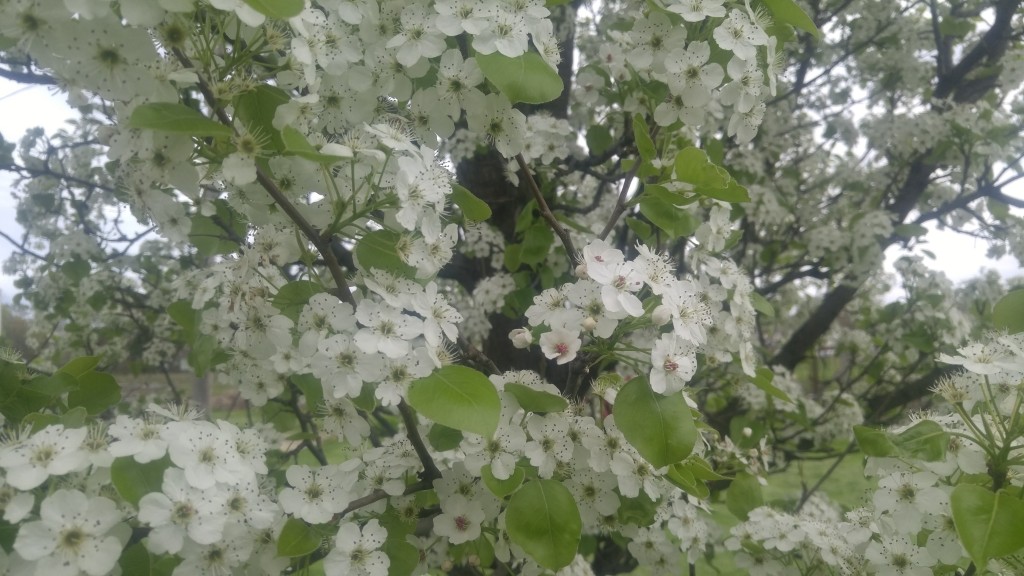Ornamental Bradford pear trees are in full flower right now. They must be everyone’s favorite tree, or you would think so because everywhere there’s a housing development there’s at least one Bradford pear tree planted in front of every house. Even municipalities and businesses are planting them.
They do have a certain charm and they’re quite eye-catching when they’re in full bloom. But there’s so many of them now that they’re beginning to just become part of the background visual-noise instead of being an accent in the landscape.
Landscapers plant Bradfords because of their flowers, shape and moderate size, and even though they are an introduced species, they are believed to be non-invasive by many. That has been the case in Michigan until recently. There’s evidence that these trees have become tired of being well-behaved and have decided to cut loose from their suburban lawns. This was pointed out to me a couple of years ago by a local, well-respected naturalist. To drive home her point she said all you had to do was look at the number of wild Bradford pears growing all along the highways.
Well, I drove the entire length of I -275 this week and was surprised how many out of place Bradford pears there were. They weren’t overcrowding any one area but there were plenty of single trees and small clusters of them. When you’re looking for them you begin to see them everywhere.

Even though this tree was covered with flowers, no bees were around. Bees seem t prefer other kinds of flowers if given the choice.
These more boisterous, escaped trees are claiming some area for themselves and have the potential to push out the native plants. The conventional wisdom that they are sterile and unable to reproduce may be true but something is going on. It brings to mind what Jeff Goldblum’s character Ian Malcolm said in the movie Jurassic Park, “Life uh, finds a way”.
In some other states Bradford pears are already a big enough problem that they have been place on those states invasive species list and are no longer recommended for planting.
To be fair, Bradford pears may never become a problem for us. I remember early in my career when, for a short time, some people worried smoke trees might escape and become invasive. Some trees did take root out of place here and there but the smoke tree invasion never materialized.
Maybe it’s time to think about developing a replacement for the Bradford pear if for no other reason than to add more variety to the suburban landscape.
Bob